Preserving the superfine snow, the nature, and the established ski culture
Kamui Ski Links is a resort built on the slopes of the 751-meter-high Mt. Kamui. It’s one of the largest resorts in northern Hokkaido and the main resort in the Hokkaido Powder Belt, a snow resort area boasting some of the greatest volumes and quality of snow in the world. The 2,327-meter-long gondola lift leads to the summit, and from there run 25 trails, ranging from ungroomed trails for reveling in the powder snow on natural terrain, to groomed trails for a sense of speed, to slalom trails, to the resort’s signature monster size 150-meter-wide Gold courses. This infinite variety of trails is the selling point of Kamui Ski Links. Let’s ask its spokesperson and Asahikawa native Junya Abe about the resort’s highlights.
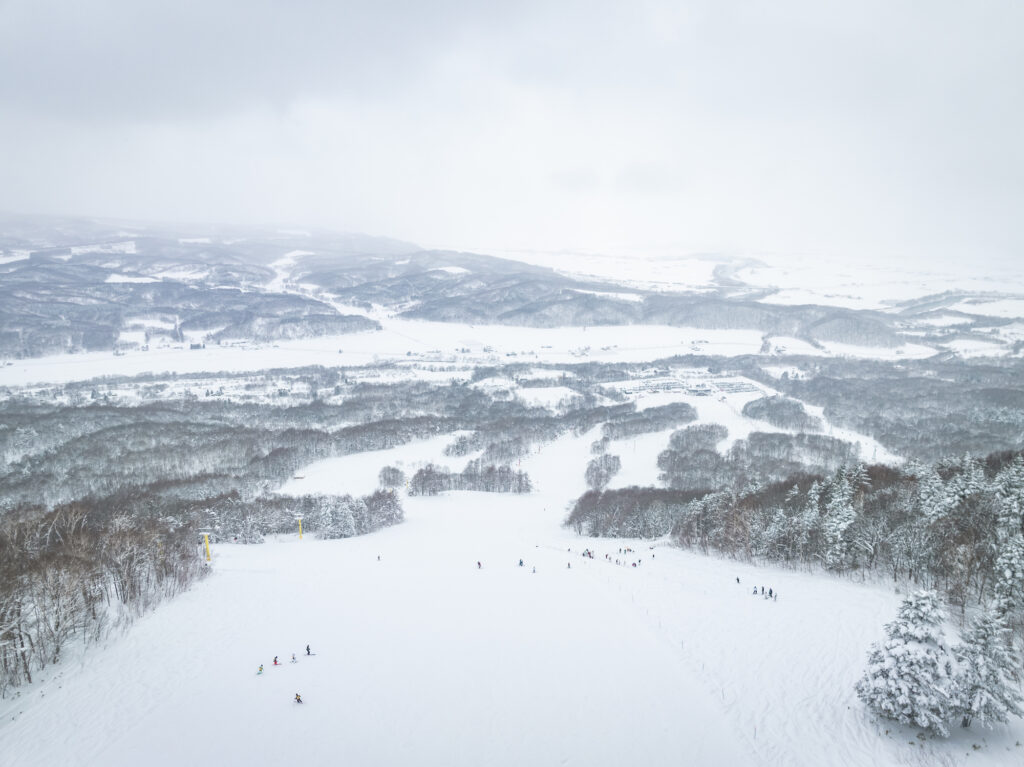
“Well, our number-one highlight is the view from the summit. There’s an endless forest of Sakhalin fir trees covered in hoar frost, and on a clear day, the white creates a beautiful contrast against the bright blue sky. We call that blue ‘Kamui blue.’ Another must-see is the panorama of the Ishikari Plain. With your eyes, you can follow the Ishikari River all the way to the Sea of Japan. Talk about the dynamic landscape of Hokkaido!”
The views aside, the proud highlight of the ski area is a patch of snow that’s even softer and finer than powder snow, called “silky snow.” The cold region located inland presents the geographical gift of floury snow that doesn’t hold its shape when pressed between the hands.
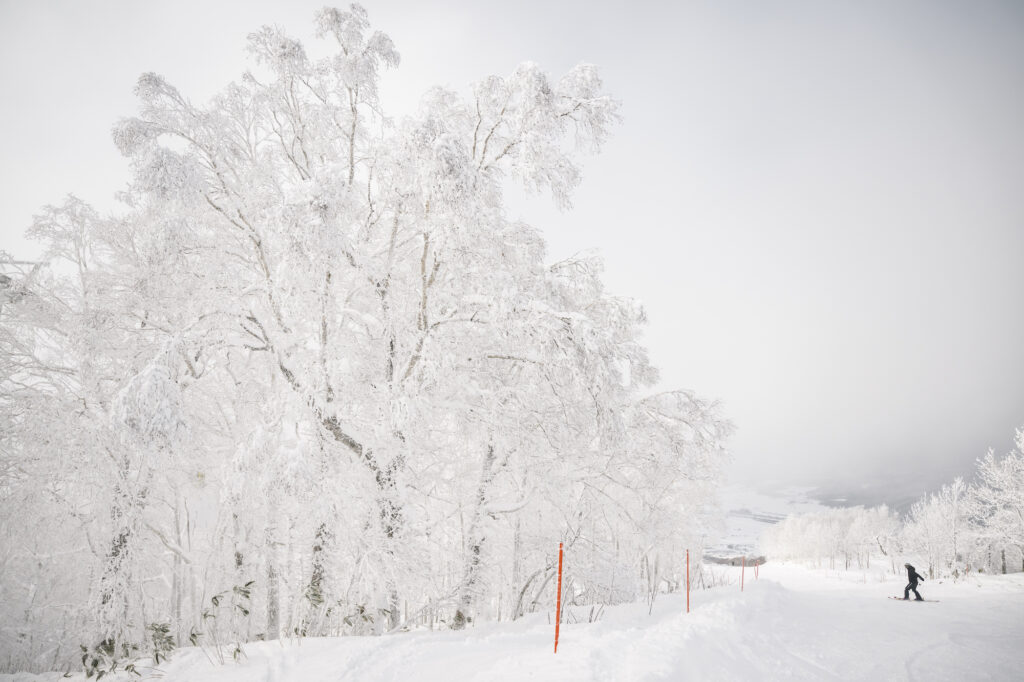
“Silky snow” on the “mountain of the gods”
“Snow clouds that make it this far inland collide with the Daisetsuzan mountain range and produce lots of snow. During this process, the clouds lose their excess moisture, and it’s these moistureless clouds that produce snow that’s even lighter and drier than powder snow—‘silky snow.’”
Mt. Kamui means mountain of the kamuy, or “mountain of the gods.” As the name suggests, all of the nature on it is precious and heavenly. Mr. Abe says, “I’ve never been interested in skiing at any other resort.” From its setting between Mt. Asahidake and the Daisetsuzan mountain range, Mt. Kamui is believed to be a pathway of the gods, and as such, it has long been cherished and protected by the indigenous Ainu people.
“That’s why we local residents have it in our mindset to conserve this natural environment. The district of Kamikawa, made up of 23 cities, towns, and villages, aims to achieve net zero carbon emissions by 2050, and every resident is aware of that and ready to take action.”
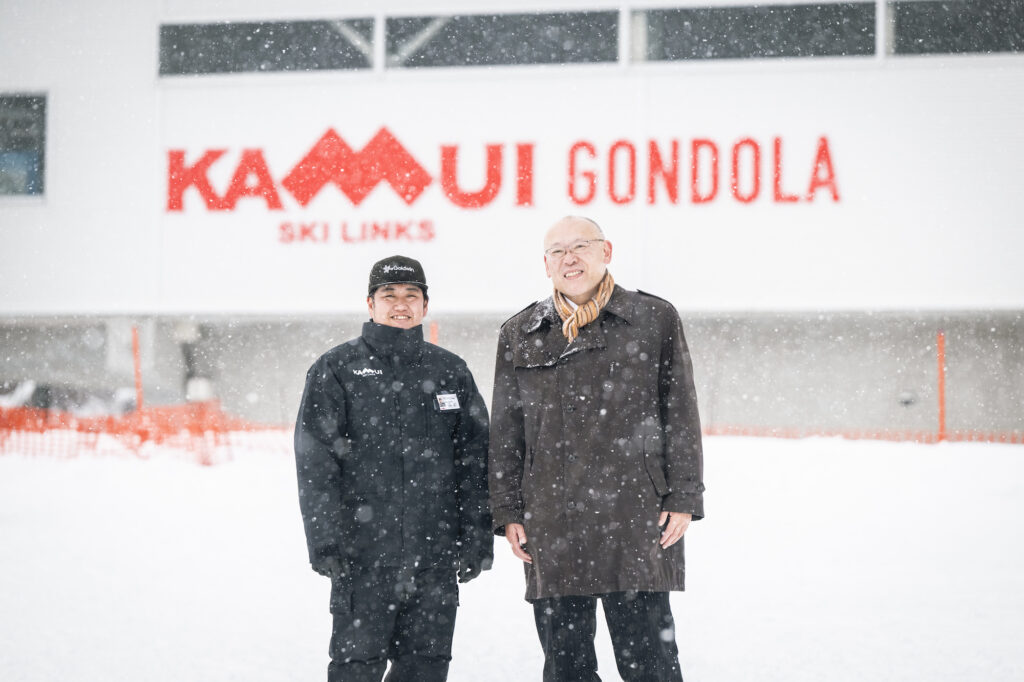
Above freezing temperatures in December, rain in March—weather patterns that were unthinkable in the past are instilling a sense of crisis in facilities offering snow activities. Kamui Ski Links is making steady efforts too, like switching from plastic to bamboo cutlery at its summit restaurant, and recycling its used cooking oil. In a new move this season, it also started using the birch trees cleared for ski trail construction as a core material for making snowboards. A prototype has just been completed.
The resort’s decision to adopt Goldwin sustainable workwear for the uniforms of its ski patrollers and lift operators also stems from the hope of reducing its environmental footprint. Masahiko Sato, vice director of Taisetsu Kamui Mintara DMO, the operator of Kamui Ski Links, tells us the story behind his decision.
“Goldwin shares our sense of crisis about environmental issues—I found that incredibly encouraging. The workwear is designed so that the easily damaged parts like cuffs and hems can readily be repaired or replaced. And it’s made with materials that can be recycled at the end of the garment’s usable life. Every detail aims at minimizing waste, extending use, and recycling, and that struck a chord with me. Recycling and recyclable products cost more. That can’t be helped. Those of us living today are responsible for choosing value over cost. Otherwise our familiar snowscape might fade away and become a rarity in the near future.”
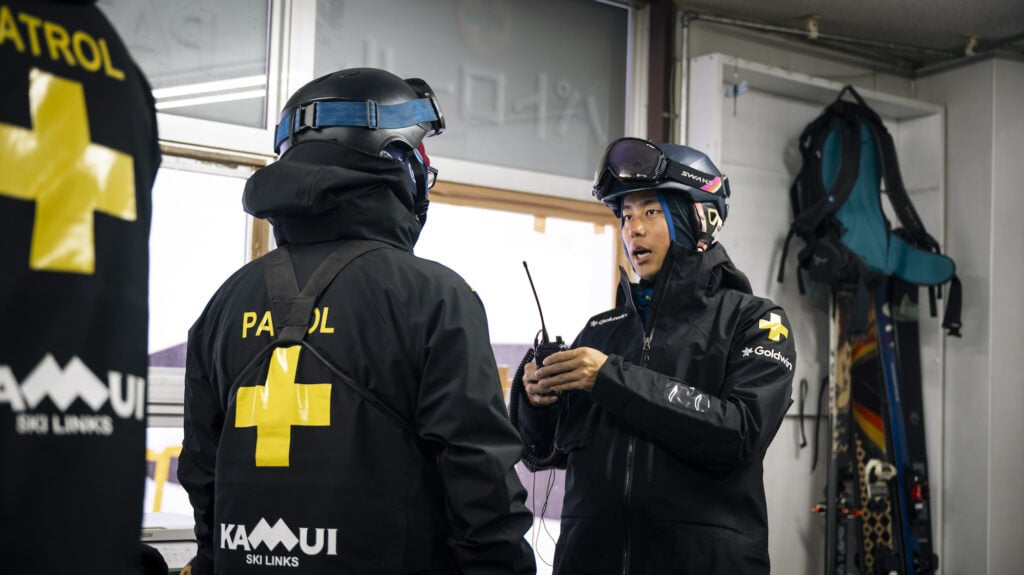
Feedback from the staff members who actually wear the garments is positive too:
“It keeps me warm even in temperatures below –10ºC.”
“We used to wear skiwear for work, but this workwear is clearly designed for lift operations. The hood, the neckline, and the big and easy-to-use pockets—I can tell each detail is thought through and created with a sense of purpose.”
“This is workwear, but it doesn’t do any harm to ski in it. I even gave ski lessons wearing this!”
In future, Mr. Sato plans to advertise to the guests that the resort adopts sustainable workwear.
“I feel it’s important for us to keep up our awareness that we’re privileged to be running a ski resort on land that we are borrowing from nature,” says Mr. Abe. “We are responsible for taking care of and preserving this borrowed land, and for eventually giving it back. Goldwin workwear is an outward expression of our awareness.”
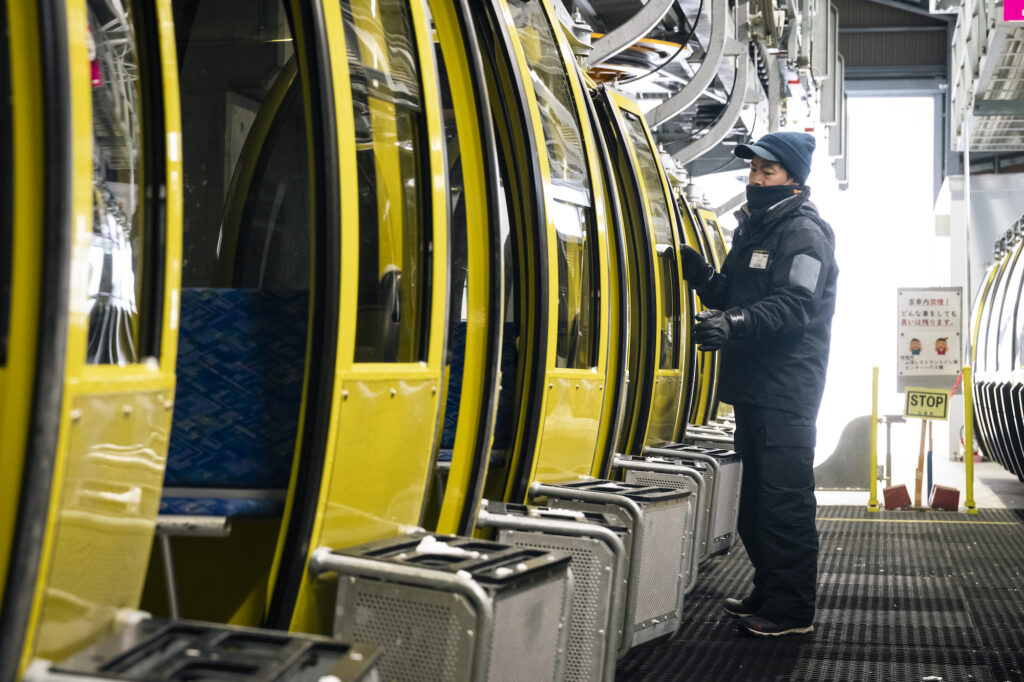
Kamui Ski Links role in sustainable tourism and skier development
Taisetsu Kamui Mintara DMO creates sustainable tourism content for the one city and eight towns affiliated with Daisetsuzan National Park. It works to conserve the area’s nature while promoting the tourism industry and regional revitalization, and as part of those activities, is in the sixth year of operating Kamui Ski Links.
“Kamui Ski Links is an emblem of our efforts in destination management and marketing,” says Mr. Sato. “The resort is a symbol of this area, and to enhance its value, we prioritize safety over profits and invest in human resources and capital assets. Externally, our pillar of tourism is adventure travel, comprising elements such as experiences and activities in nature and cultures. Personally, I believe that the best tourism resources are people, and exchanges with people are the reason and reward of travel and tourism. By encouraging tourists to understand the local community and interact with the local people, we could change their objective from mere sightseeing to building relationships. Building close relationships with the people and the community will get them to think and act with respect for the destination’s nature and culture. And ultimately, that will help us promote both sustainability and regional revitalization.”
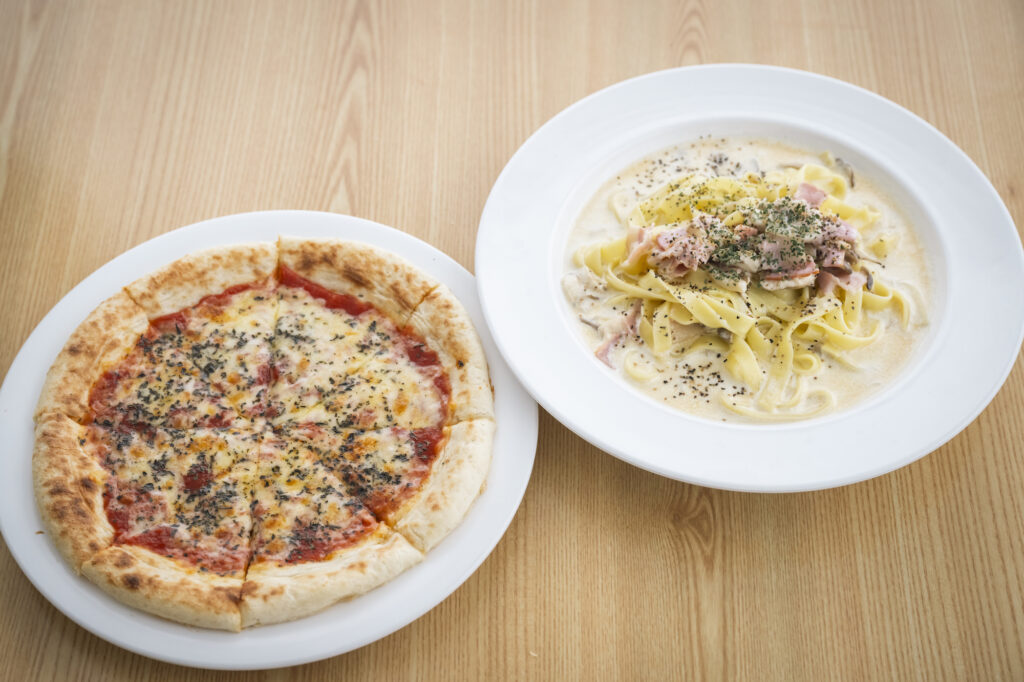
In the context of tourism content, Kamui Ski Links is in charge of community creation. Mr. Abe takes on this task through the resort’s official social media accounts. He says his keywords for getting people to choose Kamui Ski Links over the many other ski resorts, and for getting them to come back as repeat customers, are people and community.
“When I was a kid, every winter break I took my homework to the ski resort and asked the adult skiers there for help. Sure, there might have been some small-town friendliness at play, but the connections between people also helped to nurture a unique ski resort community. People may not connect much any more today, but that gives both children and adults even more reason to need a community bound by their common interest in skiing, don’t you think?”
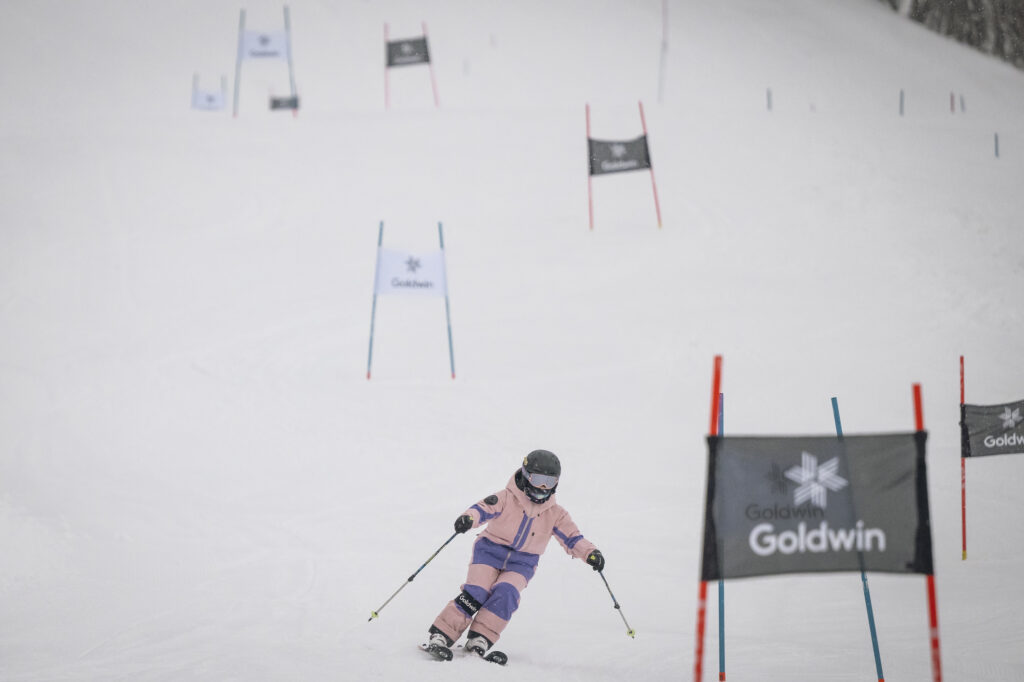
In order to nurture that kind of community, it’s essential to develop the next generation of skiers. In support of Kamui Ski Links efforts to pass down the local ski culture, Goldwin organizes an annual Goldwin Jr. Demo Camp inviting teams of celebrity guest coaches. In the latest edition, held over a two-day period at the end of 2023, 20 mostly local elementary and middle school pupils trained with five top athletes and skiers: Daisuke Yoshioka, alpine ski racer formerly with the Japan national team and a three-time winner of the All Japan Ski Technical Championships; Tomoya Ishii, alpine ski racer formerly with the Japan national team and currently with the Goldwin Ski Club; Shun Okumura, 2nd place in the 2023 All Japan Ski Technical Championships; Ayumi Komori, local star athlete; and Konosuke Kawajiri, 19th place in the 2023 All Japan Ski Technical Championships. This dream team provided slalom training on day one, and basic skiing on groomed and ungroomed trails on day two, and developed the participants’ fundamental skiing skills.
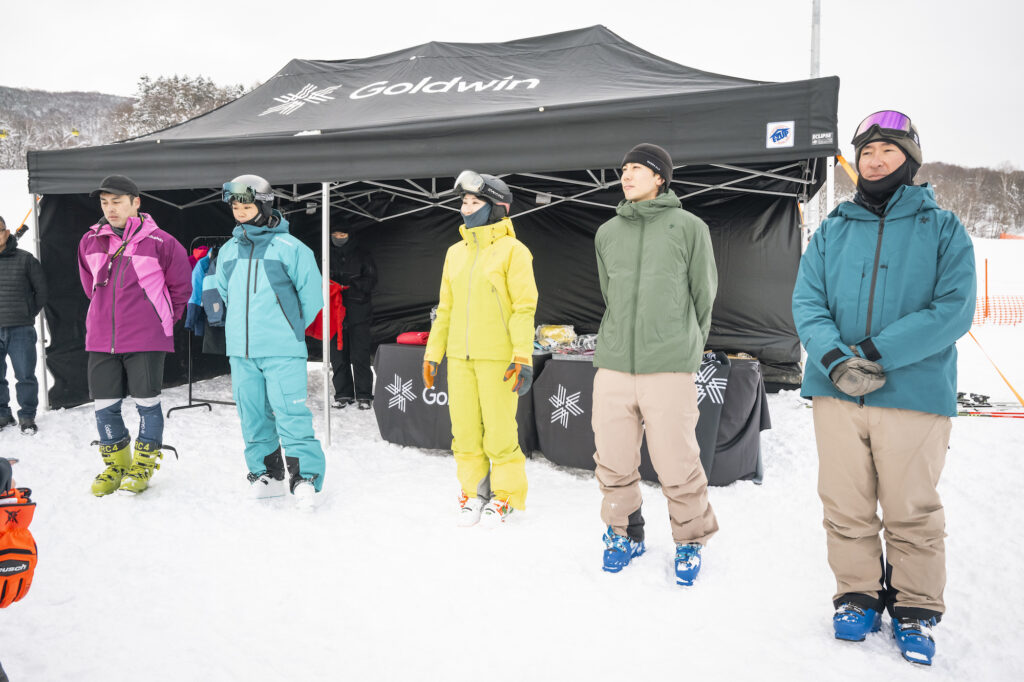
Every child participating in the camp was motivated to ski better. Some started out gingerly, maintaining a V-shape with their skis throughout their first-ever slalom run. But even these kids gradually gained speed, and toward the end, put on an impressive display of confident skiing. The coaches say their hope was that starting with slalom training would teach the kids the joy of skiing.
“You might think the slalom trail is reserved for seasoned skiers, but we wanted to teach the kids that it’s okay to ski slow, just have doing it,” says Tomoya Ishii. “That was the whole point of this event. First, just try skiing. With practice, balance and control will improve naturally, and speed will follow. We also wanted to introduce the kids to not only general trails but also mogul, slalom, ungroomed, and a variety of other situations, because it’s a great way to expand their skills. That’s our advice to beginners and families too. Don’t be shy, give it a try!”
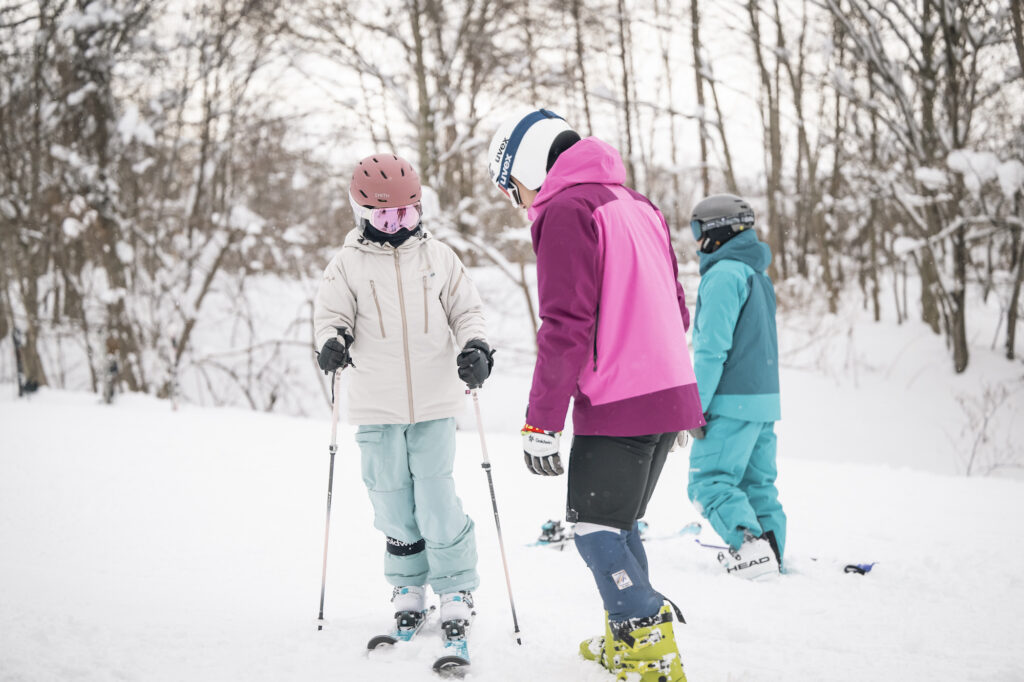
Kamui Ski Links is striving to create a positive future in its role as a self-made community leader. Though faced with a mountain of challenges, from global warming to a declining skiing population, Mr. Sato and his team are working with a passion to preserve the local nature and ski culture, pass it down to the next generation, and revitalize the foothill community.












